The German motor club ADAC is at the very peak of tire testing, so any new test of theirs is extremely exciting. For 2025 ADAC has tested popular all season tires in the common 225/45 R17 size, and included a wear test and a real world economy test. Sadly this test was started before the introduction of the CrossClimate 3.
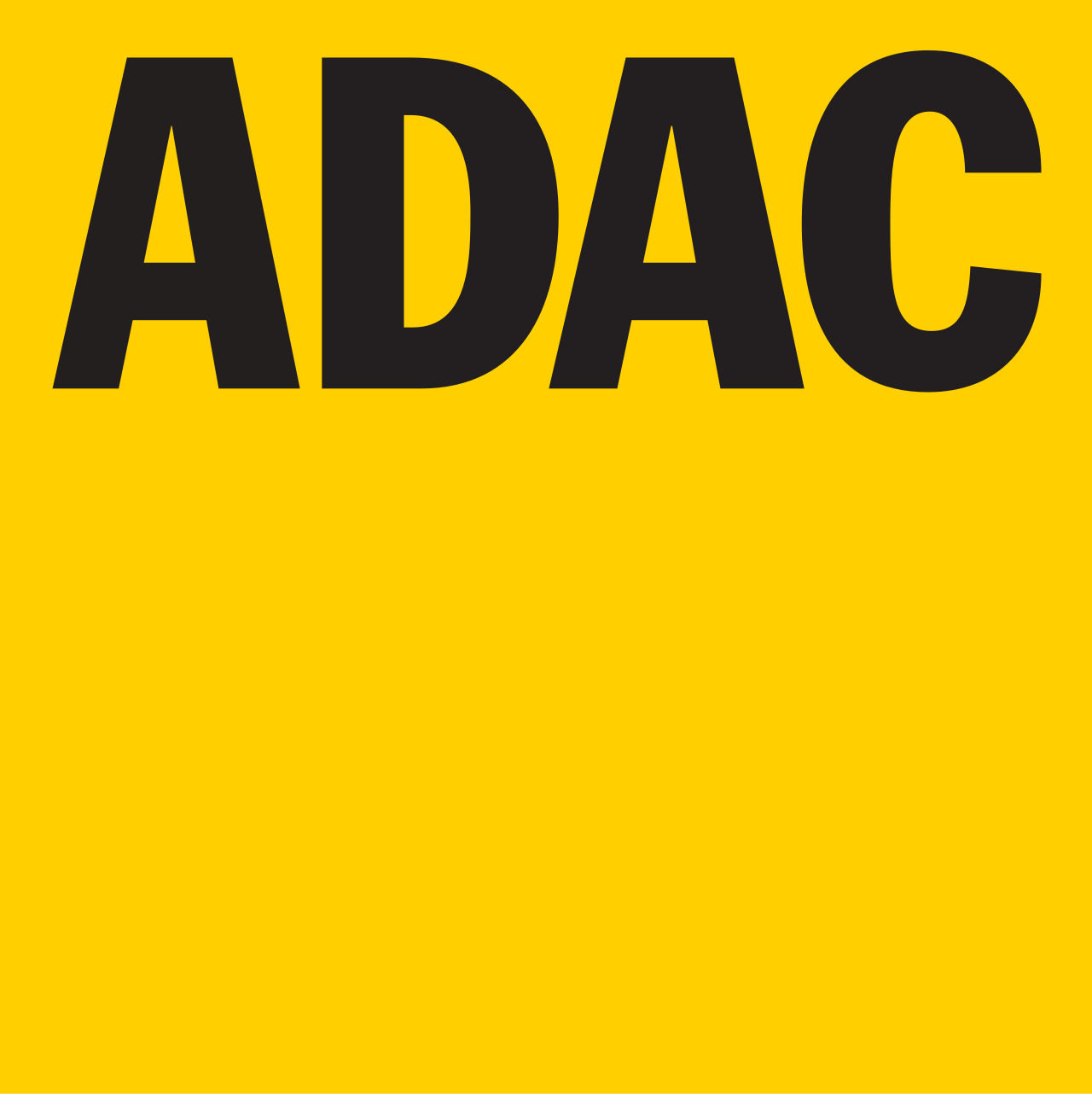
6 categories (13 tests)
| Test Category | Best Performer | Worst Performer | Difference |
|---|---|---|---|
| Dry (1 tests) | |||
| Dry Braking | ▲ Pirelli Cinturato All Season SF3: 38 M | ▼ Barum Quartaris 5: 45.3 M | 7.3 M (16.1%) |
| Wet (4 tests) | |||
| Wet Braking | ▲ Continental AllSeasonContact 2: 31.3 M | ▼ Arivo Carlorful AS: 42.6 M | 11.3 M (26.5%) |
| Wet Braking - Concrete | ▲ Continental AllSeasonContact 2: 38.4 M | ▼ Arivo Carlorful AS: 52.6 M | 14.2 M (27.0%) |
| Straight Aqua | ▲ Bridgestone Turanza All Season 6: 78.5 Km/H | ▼ Arivo Carlorful AS: 65.6 Km/H | 12.9 Km/H (19.7%) |
| Curved Aquaplaning | ▲ CST Medallion All Season ACP1: 2.8 m/sec2 | ▼ Aplus AS909: 1.8 m/sec2 | 1.0 m/sec2 (55.6%) |
| Snow (2 tests) | |||
| Snow Braking | ▲ Nexen N Blue 4Season 2: 9 M | ▼ Petlas Multi Action PT 565: 12.5 M | 3.5 M (28.0%) |
| Snow Traction | ▲ Michelin CrossClimate 2: 257 N | ▼ Petlas Multi Action PT 565: 173 N | 84.0 N (48.6%) |
| Ice (1 tests) | |||
| Ice Braking | ▲ Nexen N Blue 4Season 2: 14.2 M | ▼ CST Medallion All Season ACP1: 18.7 M | 4.5 M (24.1%) |
| Comfort (1 tests) | |||
| Noise | ▲ Nexen N Blue 4Season 2: 71.1 dB | ▼ Barum Quartaris 5: 74.5 dB | 3.4 dB (4.6%) |
| Value (4 tests) | |||
| Wear | ▲ Goodyear Vector 4Seasons Gen 3: 68000 KM | ▼ Superia Ecoblue2 4S: 34700 KM | 33,300.0 KM (96.0%) |
| Value | ▲ Aplus AS909: 1.42 Price/1000 | ▼ BFGoodrich Advantage All Season: 3.09 Price/1000 | 1.7 Price/1000 (54.0%) |
| Fuel Consumption | ▲ Aplus AS909: 5.5 l/100km | ▼ Bridgestone Turanza All Season 6: 5.8 l/100km | 0.3 l/100km (5.2%) |
| Abrasion | ▲ Goodyear Vector 4Seasons Gen 3: 51 mg/km/t | ▼ Vredestein Quatrac Pro Plus: 78 mg/km/t | 27.0 mg/km/t (34.6%) |
Even with ADAC's rather unique way of testing, the winners are not a surprise, with Goodyear, Continental and Pirelli taking the top spots. The most interesting piece of data was the wear result of the Pirelli Cinturato All Season SF3 - all but matching the Michelin CrossClimate 2 and beating the Bridgestone Turanza All Season 6, but none of the leading tires could get close to the Goodyear Vector 4Seasons Gen-3 impressive wear results.
As usual, ADAC only present a selection of data, but be sure to visit their site for their detailed thoughts on the test results. This is perhaps the first year ADAC has described a number of the tires as good to replace a summer and winter tire combination, though half the tires were still not up to their high standards.
Dry
The Pirelli Cinturato All Season SF3 led the Bridgestone Turanza All Season 6 in braking, with the cheaper tires performing poorly, stopping over 8 meters further on.
Wet
There was nearly a 10 meter difference between the best and worst all season tires in wet braking, with Continental, Bridgestone and Pirelli leading the pack.
The order was almost the same when wet braking on concrete.
PIrelli and Bridgestone were the best of the top performers in the deeper water of aquaplaning.
Snow
Barum, Michelin and Nexen tied for the best result in snow braking, with all the tires other than the Petlas performing relatively well.
Michelin, BFGoodrich and Nexen had the highest traction force in the snow traction test.
Ice
The Nexen N'Blue 4Season 2 also led the way in ice braking, with Aplus making a surprise appearance in second place.
Comfort
The Nexen was also the quietest tire in the passby noise test.
Value
Goodyear and Dunlop had a huge lead in the wear test.
When calculating wear vs purchase price, the Aplus AS909 proved to be the best value.
The amount of weight a tire loses during the wear test doesn't always match the wear results, but in this case it was fairly close, with Goodyear, APlus and Dunlop having the best wearing compounds in terms of particulate matter.
Finally, Aplus was the best in the fuel consumption test, however all the tires were only separated by 0.3 litres per 100 km driven.
Results
1st: Goodyear Vector 4Seasons Gen 3 | |||||||||||||||||||||||||||||||||||||||||||||||||||||||||||||||||||||||||||||||||||||
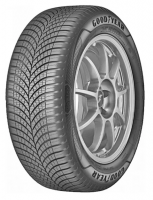
|
The Goodyear Vector 4Seasons Gen-3 just misses a "good" rating for driving safety due to weaknesses on dry roads, but its very strong environmental performance secures a good overall grade. In summer conditions, the tire lacks precise steering response, requiring minor corrections in curves, and its dry braking is only satisfactory. It performs well on wet surfaces, especially in braking and handling, though its aquaplaning resistance is average. In winter conditions, the tire is impressive, offering short braking distances on snow and ice with excellent traction. Its only shortcoming is average handling performance on snow. Environmentally, the tire is a top performer with a very high projected mileage, low abrasion, and good marks for weight and fuel efficiency. Read Reviews | ||||||||||||||||||||||||||||||||||||||||||||||||||||||||||||||||||||||||||||||||||||
2nd: Continental AllSeasonContact 2 | |||||||||||||||||||||||||||||||||||||||||||||||||||||||||||||||||||||||||||||||||||||
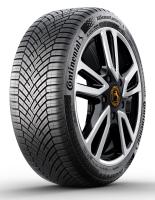
|
The Continental AllSeasonContact 2 is the only tire in the test to achieve a "good" rating in both driving safety and environmental impact, resulting in a good overall score. On dry roads, it performs well, offering good steering feedback and safe handling at the limit, along with above-average braking. It is also convincing on wet surfaces, scoring high marks for braking and handling, providing good grip and precise control, though its resistance to aquaplaning is only satisfactory. Uniquely, it also secures a good rating on winter roads, delivering above-average performance in all areas, including braking on ice and snow, traction, and safe handling. In the environmental assessment, the tire also earns a good score thanks to its positive predicted mileage, low abrasion, and low fuel consumption, though its slightly above-average weight prevents an even better rating. Read Reviews | ||||||||||||||||||||||||||||||||||||||||||||||||||||||||||||||||||||||||||||||||||||
3rd: Pirelli Cinturato All Season SF3 | |||||||||||||||||||||||||||||||||||||||||||||||||||||||||||||||||||||||||||||||||||||
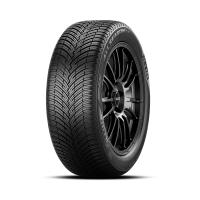
|
The Pirelli Cinturato All Season SF3 narrowly misses a "good" result for driving safety but achieves a good rating for its environmental performance, securing a just-good overall score. It is the top-performing tire in the test on dry roads, offering precise steering, good handling at the limit, and nearly a "very good" rating for its short braking distance. It also scores best on wet roads, delivering good results in both braking and handling with strong grip and control, though its aquaplaning resistance is only rated as satisfactory. However, its performance dips on winter roads; braking and handling on snow are merely satisfactory as it struggles to combine longitudinal and cornering forces effectively. It does, however, earn good ratings for traction on snow and braking on ice. Environmentally, the tire performs well, with good projected mileage, low abrasion, low weight, and minimal impact on fuel consumption. Read Reviews | ||||||||||||||||||||||||||||||||||||||||||||||||||||||||||||||||||||||||||||||||||||
4th: Bridgestone Turanza All Season 6 | |||||||||||||||||||||||||||||||||||||||||||||||||||||||||||||||||||||||||||||||||||||
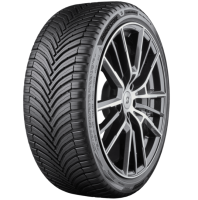
|
The Bridgestone Turanza All Season 6 narrowly misses a "good" score for driving safety, but its strong environmental performance helps it secure a satisfactory overall result. On dry roads in summer, it shows slight weaknesses with only adequate steering feedback and response, requiring occasional corrections in long curves. However, it maintains good safety reserves at the limit and achieves a good rating for braking from high speeds. The tire performs well on wet surfaces, particularly in braking and handling, allowing for precise control. Its straight-line aquaplaning resistance is good, though only satisfactory when cornering. In winter conditions, its performance falters, receiving merely satisfactory scores for snow braking and handling. While it earns good ratings for snow traction and ice braking, it struggles to effectively combine cornering and straight-line forces on snow. Environmentally, the tire scores well with good projected mileage, low abrasion, and low fuel consumption, though its slightly above-average weight prevents a top mark in this category. Read Reviews | ||||||||||||||||||||||||||||||||||||||||||||||||||||||||||||||||||||||||||||||||||||
5th: Michelin CrossClimate 2 | |||||||||||||||||||||||||||||||||||||||||||||||||||||||||||||||||||||||||||||||||||||
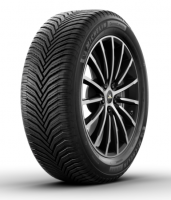
|
The Michelin CrossClimate 2 receives a merely "satisfactory" overall rating because its performance on wet roads doesn't rise above that level, despite a good environmental score. On dry roads, the tire performs well, offering good steering feedback, precision, and safe handling at its limits, along with a good braking distance. However, on wet surfaces, it only achieves a satisfactory result; while its braking is still considered good, its resistance to aquaplaning and its general wet handling are rated as average due to mediocre grip levels. In contrast, the Michelin delivers the best winter performance in the test. It scores well for traction and braking on snow and ice, and it uniquely earns a "very good" rating for its outstandingly precise handling and high safety reserves on snow. Environmentally, the tire performs well, offering high projected mileage, low wear, and above-average results for both fuel consumption and weight. Read Reviews | ||||||||||||||||||||||||||||||||||||||||||||||||||||||||||||||||||||||||||||||||||||
6th: Dunlop All Season 2 | |||||||||||||||||||||||||||||||||||||||||||||||||||||||||||||||||||||||||||||||||||||

|
The Dunlop Sport All Season 2's driving safety is only rated "satisfactory" due to its performance on both dry and wet roads. While a good environmental score improves its standing slightly, the overall result remains satisfactory. The tire's weakest performance is on dry roads, where it offers only average steering feedback and lacks precision, requiring frequent driver corrections. Its braking distance is also below average. On wet surfaces, it narrowly misses a good rating, held back by merely satisfactory aquaplaning resistance. However, it earns good scores for wet braking and handling, providing precise and safe control. In winter conditions, the tire performs well, achieving good ratings across the board for traction on snow, braking on snow and ice, and secure handling. Environmentally, the Dunlop scores well with a very good rating for projected mileage and good results for wear, weight, and fuel consumption. Read Reviews | ||||||||||||||||||||||||||||||||||||||||||||||||||||||||||||||||||||||||||||||||||||
7th: BFGoodrich Advantage All Season | |||||||||||||||||||||||||||||||||||||||||||||||||||||||||||||||||||||||||||||||||||||
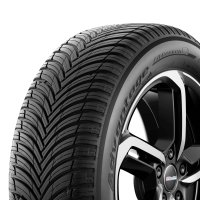
|
The BFGoodrich Advantage All-Season tire does not surpass a "satisfactory" rating in either driving safety or environmental performance, leading to a satisfactory overall grade. On dry roads, it performs well, offering good steering feedback, precision, and safe handling at the limit, along with a significantly shorter-than-average braking distance. However, on wet surfaces, its performance is only satisfactory. It fails to deliver good results in braking and aquaplaning tests, and its handling is also rated as merely satisfactory because it struggles to combine lateral and longitudinal forces, leading to early understeer or oversteer. In contrast, the tire is convincing in winter conditions, earning good ratings for its braking, traction, and secure handling on snow. Environmentally, the tire just misses a good rating due to its projected mileage, though its wear, fuel consumption, and weight are all rated as good. Read Reviews | ||||||||||||||||||||||||||||||||||||||||||||||||||||||||||||||||||||||||||||||||||||
8th: Viking Fourtech+ | |||||||||||||||||||||||||||||||||||||||||||||||||||||||||||||||||||||||||||||||||||||
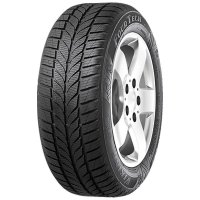
|
The Viking FourTech Plus does not exceed a "satisfactory" rating in any driving safety category (dry, wet, or winter). Although it scores a "good" rating for its environmental performance, its overall grade is only satisfactory. The tire's weakest area is on dry roads, where steering feedback and precision are lacking, requiring the driver to make corrections to hold a line. Its dry braking distance is also below average. On wet roads, it narrowly misses a good rating; while braking is good, its performance in aquaplaning and handling is only satisfactory due to a tendency to understeer or oversteer. In winter conditions, the results are also merely satisfactory across the board in traction, braking on snow and ice, and handling, with a lack of precision at the limit. On a positive note, the tire's environmental performance is good, thanks to high marks for projected mileage, low wear, low weight, and very low fuel consumption. Read Reviews | ||||||||||||||||||||||||||||||||||||||||||||||||||||||||||||||||||||||||||||||||||||
9th: Vredestein Quatrac Pro+ | |||||||||||||||||||||||||||||||||||||||||||||||||||||||||||||||||||||||||||||||||||||
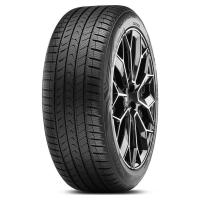
|
The Vredestein Quatrac Pro+ receives a mere "adequate" rating for driving safety due to its poor performance on dry roads, which also downgrades its overall score. On dry surfaces, it offers only adequate steering feedback and lacks precision, with delayed responses that require driver corrections to maintain a consistent line through curves. The tire also tends to oversteer early during dynamic maneuvers, and its braking is rated as only satisfactory. On wet roads, it misses a good rating; while braking is still good, its aquaplaning resistance and handling are only satisfactory due to understeer/oversteer tendencies. Winter performance is also just satisfactory, with average results in traction and braking on snow and ice. While it narrowly misses a good score in snow handling, it lacks overall precision. Environmentally, the tire achieves a satisfactory result, with good scores for projected mileage and wear, but its high weight leads to only a satisfactory efficiency rating, despite good fuel consumption. Read Reviews | ||||||||||||||||||||||||||||||||||||||||||||||||||||||||||||||||||||||||||||||||||||
10th: Barum Quartaris 5 | |||||||||||||||||||||||||||||||||||||||||||||||||||||||||||||||||||||||||||||||||||||
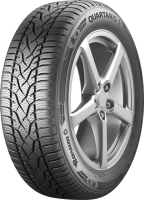
|
The Barum Quartaris 5 receives an "adequate" rating for driving safety, which also defines its overall grade. Its performance is weak on dry roads and only satisfactory on wet surfaces, though it performs well in winter and earns a good score for its environmental impact. On dry roads, the tire provides poor steering feedback and precision, requiring constant corrections as it responds with a delay and tends to oversteer early during lane changes. On wet roads, it scores as merely satisfactory across all criteria, with average grip levels and a tendency to understeer or oversteer. In contrast, the tire performs well in winter conditions, earning good scores for braking and traction on snow, and its handling is rated as secure and largely precise. Environmentally, the German-made tire achieves a good rating thanks to good projected mileage, low wear, low weight, and good fuel efficiency. Read Reviews | ||||||||||||||||||||||||||||||||||||||||||||||||||||||||||||||||||||||||||||||||||||
11th: Nexen N Blue 4Season 2 | |||||||||||||||||||||||||||||||||||||||||||||||||||||||||||||||||||||||||||||||||||||
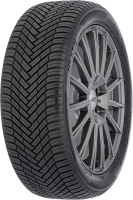
|
The Nexen N'Blue 4Season 2 receives a mere "adequate" rating for driving safety due to significant weaknesses on dry roads, which downgrades its overall score. On dry surfaces, it offers poor steering feedback and is imprecise, requiring driver corrections due to delayed responses and a tendency to oversteer early during quick maneuvers. Its dry braking, however, is rated as good. On wet roads, its performance is satisfactory overall, though it is weak in resisting lateral aquaplaning. Winter performance is a major strength, achieving the second-best result in the test. It scores well for snow traction, braking, and handling, and is notably the only tire to earn a "very good" rating for braking on ice. Environmentally, the tire narrowly misses a good rating; while its fuel consumption is low, its satisfactory projected mileage and average weight bring down its score. Read Reviews | ||||||||||||||||||||||||||||||||||||||||||||||||||||||||||||||||||||||||||||||||||||
12th: Superia Ecoblue2 4S | |||||||||||||||||||||||||||||||||||||||||||||||||||||||||||||||||||||||||||||||||||||
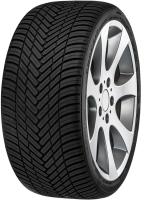
|
The Superia Ecoblue2 4S receives an overall "adequate" rating for driving safety, with its final score being downgraded due to very weak performance on wet roads. On dry surfaces, it provides poor steering feedback and is imprecise, requiring frequent corrections and exhibiting a tendency to oversteer, leading to a barely satisfactory rating. Its performance on wet roads is particularly poor, scoring as "adequate" for braking, lateral aquaplaning, and handling due to low grip levels and early, prolonged sliding. In contrast, its winter performance is good, with positive results for braking on snow and ice and good traction, though its snow handling just misses a good rating. Environmentally, the Chinese-made tire scores a satisfactory grade; while its wear and weight are acceptable, its projected mileage is not, and its sustainability is rated as merely adequate due to the manufacturer's failure to provide requested ISO certifications or other sustainability credentials. Read Reviews | ||||||||||||||||||||||||||||||||||||||||||||||||||||||||||||||||||||||||||||||||||||
13th: CST Medallion All Season ACP1 | |||||||||||||||||||||||||||||||||||||||||||||||||||||||||||||||||||||||||||||||||||||
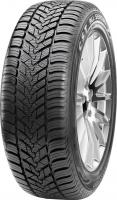
|
The CST Medallion All Season ACP1's overall driving safety is rated as "deficient" due to significant weaknesses, particularly on winter roads, and it fails to achieve more than a satisfactory rating on dry or wet surfaces. On dry roads, it offers poor steering feedback and is imprecise, requiring corrections and showing a tendency to oversteer, resulting in a barely satisfactory score. On wet pavement, its braking and aquaplaning resistance are satisfactory, but its handling is rated even lower due to a lack of grip and precision. The tire's performance on winter roads is especially poor, with its handling rated as "deficient." It struggles to combine forces, leading to early understeer and oversteer with almost no safety reserves, and it posts the worst result in the test for braking on ice. Environmentally, the Chinese-made tire misses a good rating; while its projected mileage and wear are good, its high weight results in a merely satisfactory efficiency score. Its sustainability is rated as just adequate due to the manufacturer's failure to provide requested ISO certifications or other sustainability credentials. Read Reviews | ||||||||||||||||||||||||||||||||||||||||||||||||||||||||||||||||||||||||||||||||||||
14th: Aplus AS909 | |||||||||||||||||||||||||||||||||||||||||||||||||||||||||||||||||||||||||||||||||||||
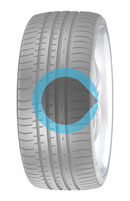
|
Translation and Summary
The APlus AS909 is rated as "deficient" overall for driving safety, a score dictated by its significant weaknesses on wet roads which led to a downgrade of its final grade. On dry roads, its performance is merely "adequate," offering poor and imprecise steering feedback that requires constant driver correction and early oversteering in dynamic maneuvers. On wet surfaces, the tire reaches its limits, earning a "deficient" rating for its braking distance and handling due to very low grip, making it difficult to control. Its winter performance is deemed satisfactory overall, securing good scores for braking and traction but only an "adequate" rating for handling, as it struggles to combine forces effectively. In contrast, the Chinese-made tire achieves a good environmental score thanks to very good projected mileage and low fuel consumption. However, its sustainability is rated as just adequate because the manufacturer failed to provide requested ISO certifications or other sustainability credentials, and its weight is high. Read Reviews | ||||||||||||||||||||||||||||||||||||||||||||||||||||||||||||||||||||||||||||||||||||
15th: Arivo Carlorful AS | |||||||||||||||||||||||||||||||||||||||||||||||||||||||||||||||||||||||||||||||||||||
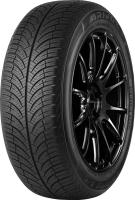
|
The Arivo Carlorful A/S receives an overall driving safety rating of "deficient." This is primarily due to significant weaknesses on wet roads, which led to a downgrade of the final score. On dry roads, its performance is merely "adequate," providing poor steering feedback and precision, requiring constant corrections from the driver, and exhibiting early oversteer during lane changes. On wet surfaces, the tire reaches its limits, earning a "deficient" rating for its braking distance and handling due to very low grip, making it difficult to control. Its winter performance is deemed satisfactory overall, securing good marks for ice braking and snow traction, but only satisfactory or adequate ratings for snow braking and handling. In contrast, the Chinese-made tire achieves a good environmental result, with positive scores for projected mileage, wear, and low fuel consumption. However, its sustainability is rated as just "adequate" because the manufacturer failed to provide requested ISO certifications or other sustainability credentials. Read Reviews | ||||||||||||||||||||||||||||||||||||||||||||||||||||||||||||||||||||||||||||||||||||
16th: Petlas Multi Action PT 565 | |||||||||||||||||||||||||||||||||||||||||||||||||||||||||||||||||||||||||||||||||||||

|
The Petlas Multi Action PT565 is rated "deficient" for overall driving safety, receiving the worst score in the test due to its very poor performance on winter roads. On dry surfaces, its performance is merely "adequate," characterized by imprecise steering, delayed responses requiring constant correction, and early oversteer. Its wet road performance is only "satisfactory," limited by average grip and a tendency to under- or oversteer. The tire is completely overwhelmed in winter conditions, earning a "deficient" rating for snow braking and handling; it fails to combine forces, has no safety reserves, and loses traction early. Its performance on ice and in snow traction is also rated as just "adequate." In contrast, the Turkish-made tire secures a barely "good" environmental rating, thanks to good projected mileage, low wear, and good fuel efficiency, though its weight is slightly above average. Read Reviews | ||||||||||||||||||||||||||||||||||||||||||||||||||||||||||||||||||||||||||||||||||||







